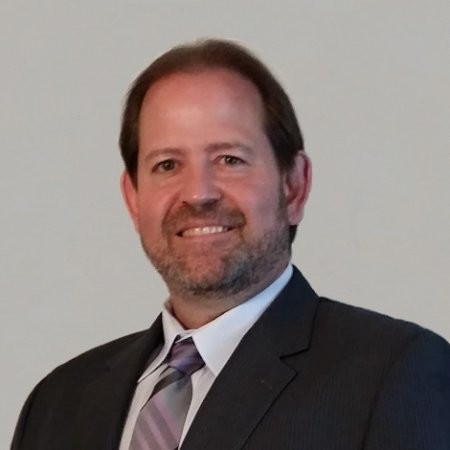Or listen in your favorite podcast app
Apple Podcasts / Google Podcasts / Stitcher
David Neely, Director of Technology at Transamerica
David Neely joins Ian to discuss how Transamerica has created a culture of innovation and the steps he’s taken to make citizen development a bigger part of what they do.
“One of the challenges as a technology leader is to not get complacent and fall into the same way of doing things because you quickly find out you’ll get left behind.” —David Neely
Show Notes
David Neely (LinkedIn), Director of Technology at Transamerica, initially got into tech as a way to inject some new life into his career. Decades later, David is still in the world of technology and has been instrumental in helping Transamerica maintain its technological edge.
In this episode, David and Ian (T: @ianfaison) discuss why it’s so important to avoid complacency and what it means to be an IT leader. From always being one step ahead of the latest updates and upgrades, to investigating and then implementing the idea of citizen developers, David has found a way to increase the bandwidth of services Transamerica can provide while inspiring innovation and excitement among his employees.
Introducing David — (1:50)
- David got into IT as a career change. He learned how to write software during the technology boom and started as a software developer.
- For the last nine years, David has been working with Transamerica. He currently leads all technology for Transamerica Financial Networks.
- Responsible for leading software development teams for TFN
How David’s IT department is structured — (3:40)
- There are many technology groups throughout the Transamerica business.
- Teams are structured into agile teams and they work to develop business solutions based on current needs.
How David decided to pursue citizen development — (4:30)
- They built up their talent, application building skills and success through Salesforce and then were introduced to the idea of citizen development.
- The idea of using citizen development made sense as a next step because it would allow David’s team to increase their bandwidth and what they were able to deliver without having to request additional headcount or budget.
- Had their first citizen-developed app out within six to eight months.
- Their first custom app was a survey app.
- The beauty of the concept is that because the underlying tools are there, the person creating the application has preexisting data and structures to create within.
Customization vs. using out-of-the-box solutions — (10:15)
- In the early years, it was customizing everything and building from the ground up.
- “Even with off-the-shelf products, we would customize them to really make them really fit. The benefit is that you get a highly-customized product, but every time you create a custom product you’re acquiring technical debt.”
- In the past few years, they have shifted away from customization in order to get as much value from the off-the-shelf products as possible.
Why governance is important — (12:35)
- “We’re a highly regulated industry and we have to have a strong governance process because we go through audits every year.”
- David worked with the Salesforce team to bring in a governance specialist to make sure that they were prepared and buttoned up with their governance model.
- With proper governance, you can have development happening on multiple tracks all funneling through a similar process.
How the financial services industry has become tech forward and moved to mobile— (15:25)
- “Mobile has moved from being something considered to being the expectation. It’s like the air we breathe.”
- Tech has historically moved at a slower pace int he financial services industry. With the backend systems specifically, it can lag behind. But on the front end, where people are selling and interacting with clients, they need to have the most technologically advanced tools.
- The older generation still reaches for their paper applications. But the younger generation getting into the field are expecting and using mobile-based tools because that’s what they’ve grown up on.
The importance of continuing to change — (18:00)
- “For our company, technology is the driving force. We can’t staff up enough to provide the functionality we would have to and have a profitable business model. Technology is at the core of what we do as a company to be able to provide services out to the field.”
- They stay ahead of the game rather than chasing the latest updates or upgrades.
- IT consultants are important and they serve a purpose, but David believes that you can’t grow if you rely on consultants.
- “Consultants are wonderful, but if you put too much of the lifeblood of what you’re putting out in the field into the hands of consultants, you’re taking a huge risk.”
- Have an exit plan and then transition to a team of core developers and officers.
- When it comes to citizen developers, the leadership had to first understand the concept and then sell it to the staff of full-time developers who are protective of their work.
- “We had to make them understand that this is not a threat to what you do, this is an enhancement that takes some of the pressure off the teams because we can deliver business value with the proper governance. …It’s an avenue where value can be delivered where the true core technical teams can be working on much more complicated technical solutions.”
How no-code developers are empowering businesses — (25:30)
- Technology leaders are always looking at how to maximize time and resources. There’s always a backlog of work and innovation, but that requires leaders to choose where to assign resources.
- “Having this resource pool of citizen developers allows you the flexibility in managing your teams and getting value out of them.”
Getting buy-in on the citizen development program — (26:55)
- Happened from the top down and the citizen development program was voluntary. They wanted the folks who were interested in advancing their skills and passionate about developing something.
- Buy-in from the top leads to building grassroots enthusiasm.
- Once they had interest, David and the other leaders created an app-athon, which was a contest where individuals and small teams worked to do training and then create an application and present it to a panel of business and technology leaders and gave out small prizes to “winners.”
- “It wasn’t about the prize, it was about the process. …The winners were all the people who participated because they got to be a part of this process and work on technolgy they had never worked on before.”
- By gamifying the process it sparked interest and helped cement the ideas and concepts.
- The opportunity was open to everyone, from mailroom workers to C-level executives. That empowers everyone to learn new skills and have a bit more skin in the game of creating something.
- “It’s a win for the company because we get more bandwidth but it’s also a win for the individual who can say, ‘I’m doing things I never thought I’d be doing when I took this job.’ To me, that’s very compelling because a company is a collection of people and that people element is key.”
- “The technical landscape is vastly different today than it was five years ago or 10 years ago. ..One of the challenges as a technology leader is to not get complacent and fall into the same way of doing things because you quickly find out you’ll get left behind.”
Lightning Round — (38:30)
- David is an early adopter of technology and any time he can get a new sensor or widget or Amazon Echo, he puts it in his house.
- Mobile payments have changed the game.
- David is a fan of historical fiction.
- The growth of the cloud has been incredible and the future of what will be possible on the cloud is very exciting.
- “It’s amazing what you can do with cloud services. From a simple guy in his garage to a Fortune 500 Company with infrastructure all over the place, the cloud has enabled amazing things. I’m constantly in awe of what’s happening in that space and seeing what’s coming next.”
- Best advice for an IT leader: “Do everything you can to avoid complacency. Innovation and complacency can’t live under the same roof.”
Mentions:




